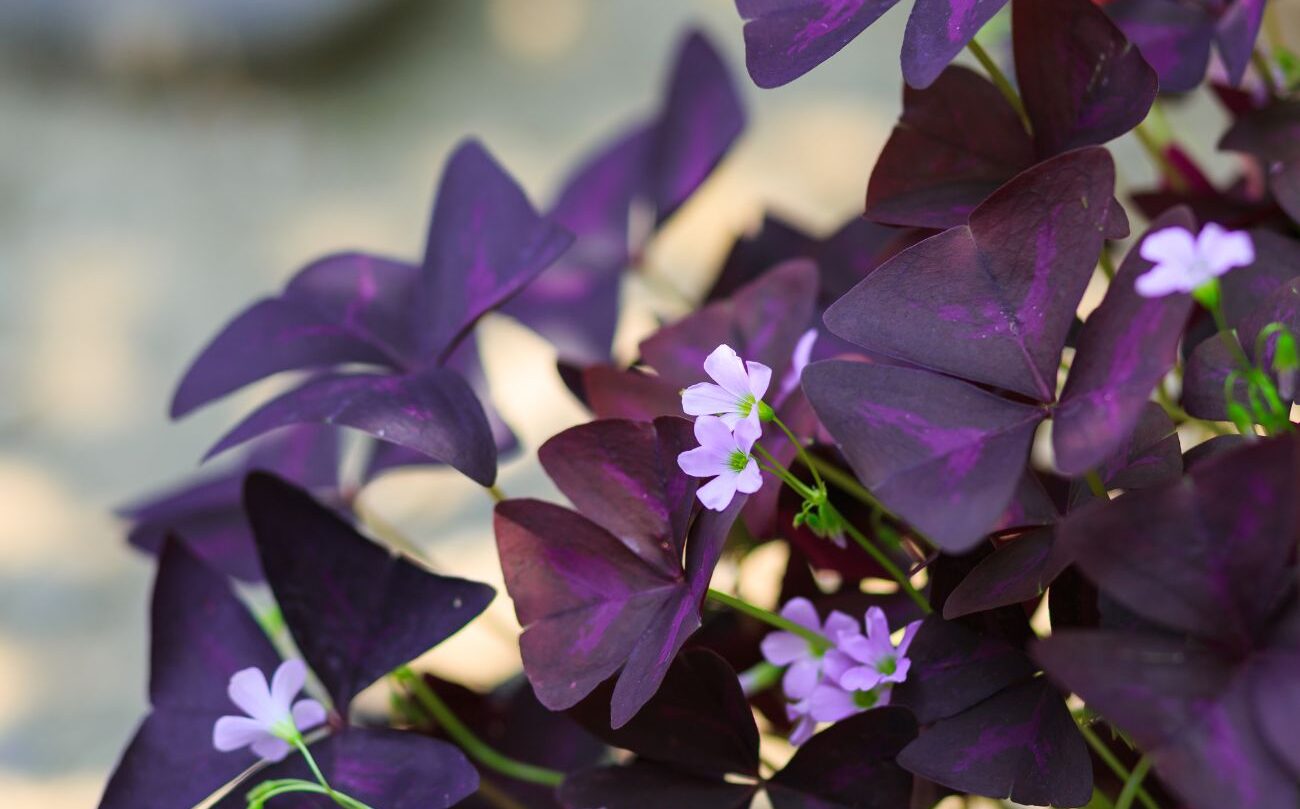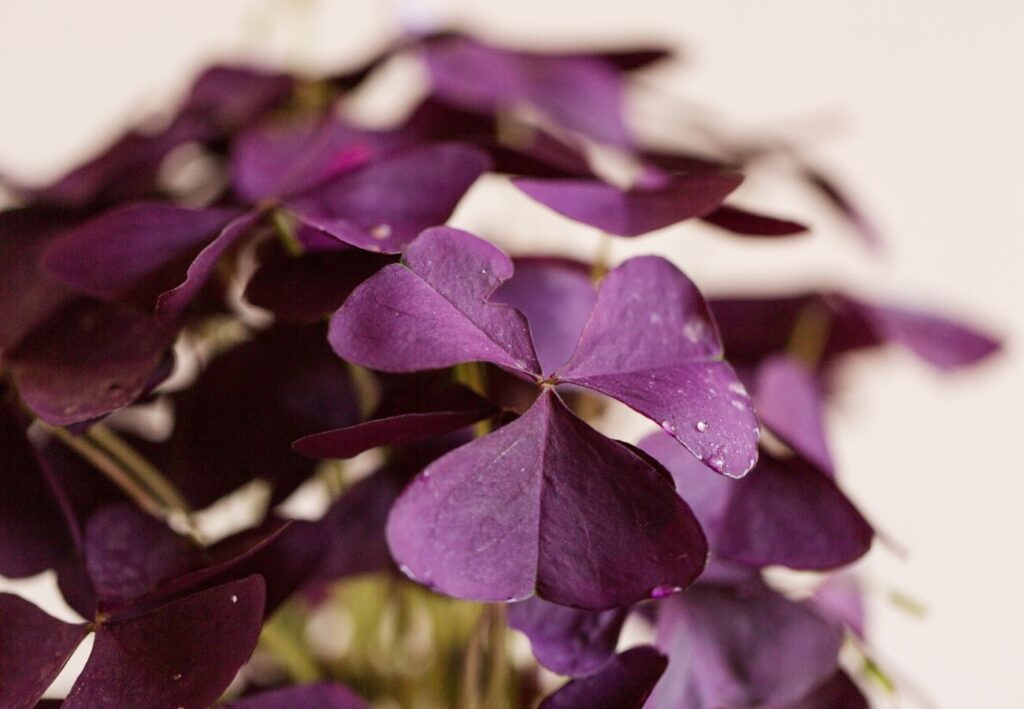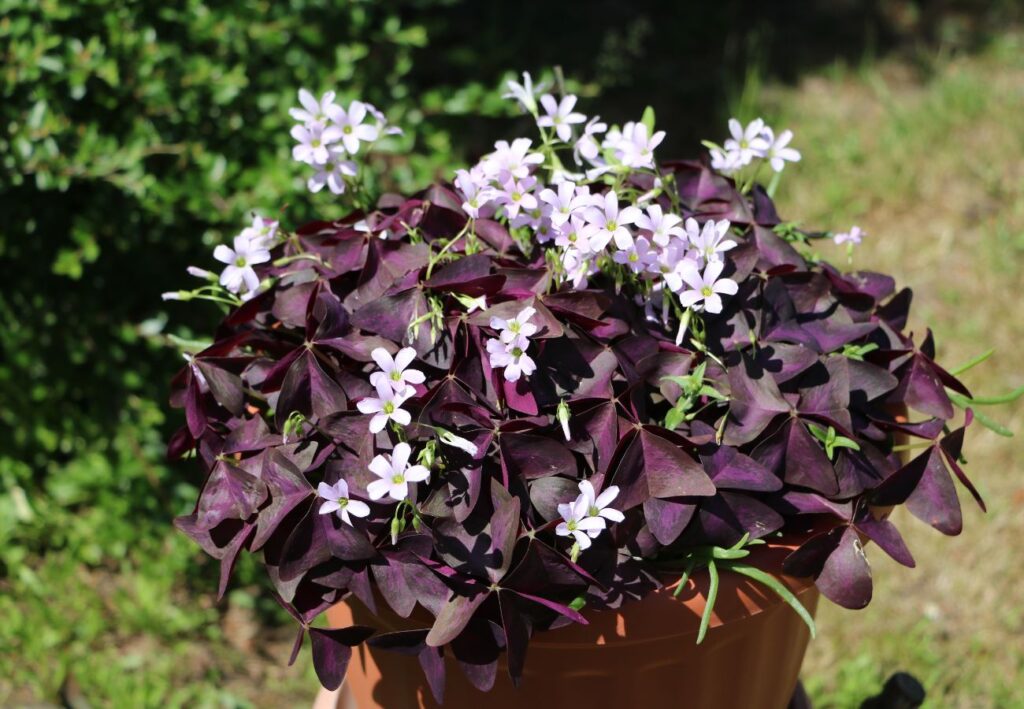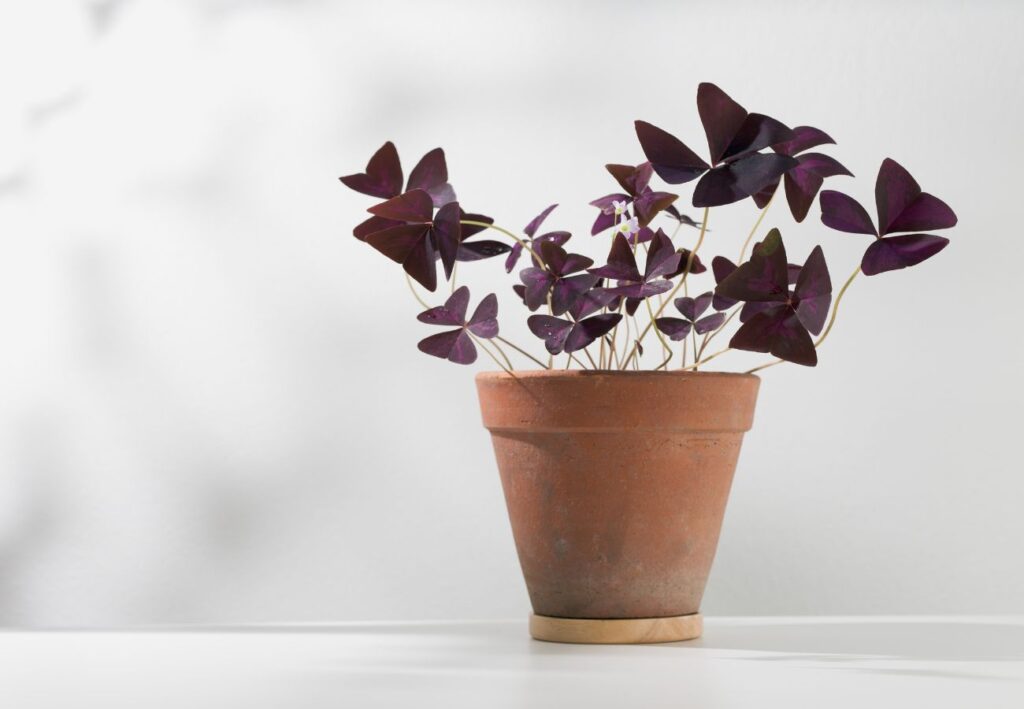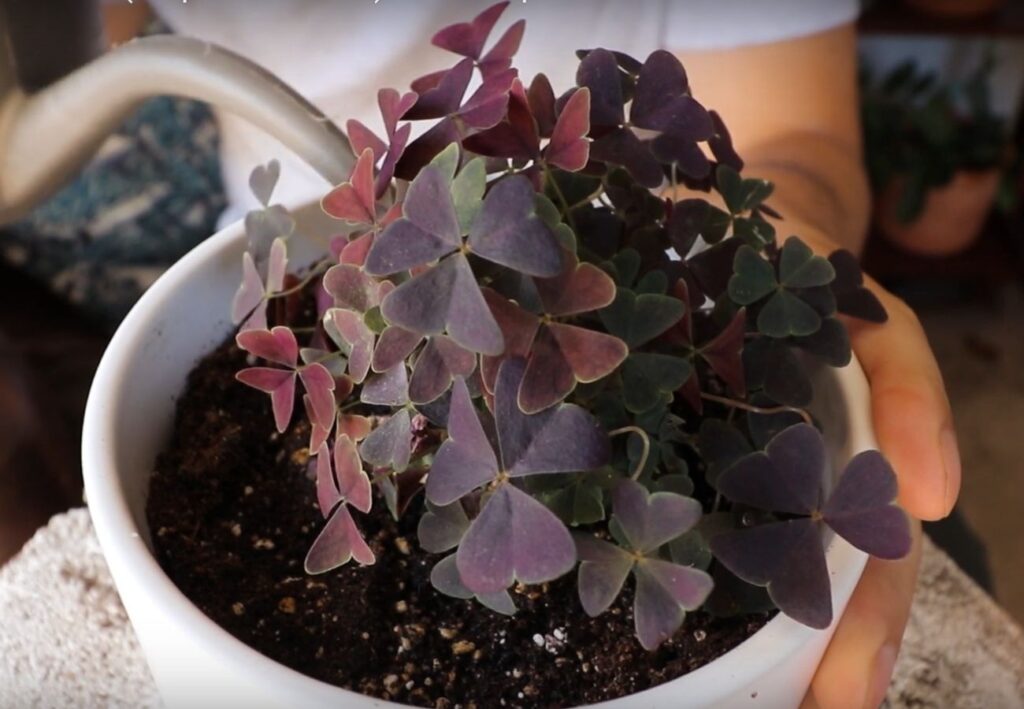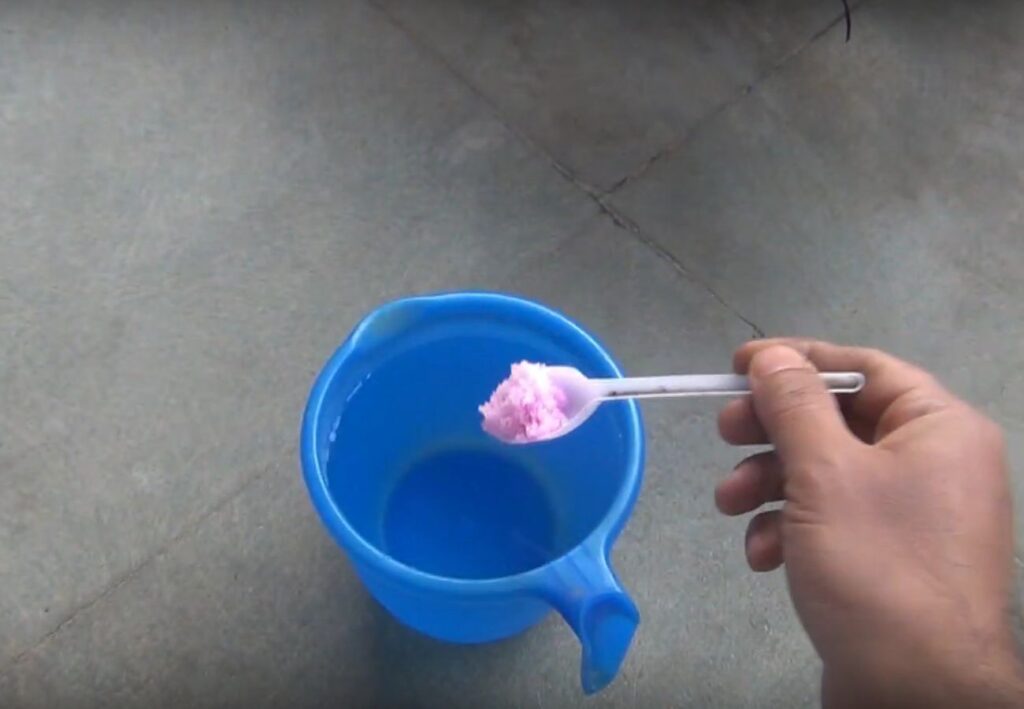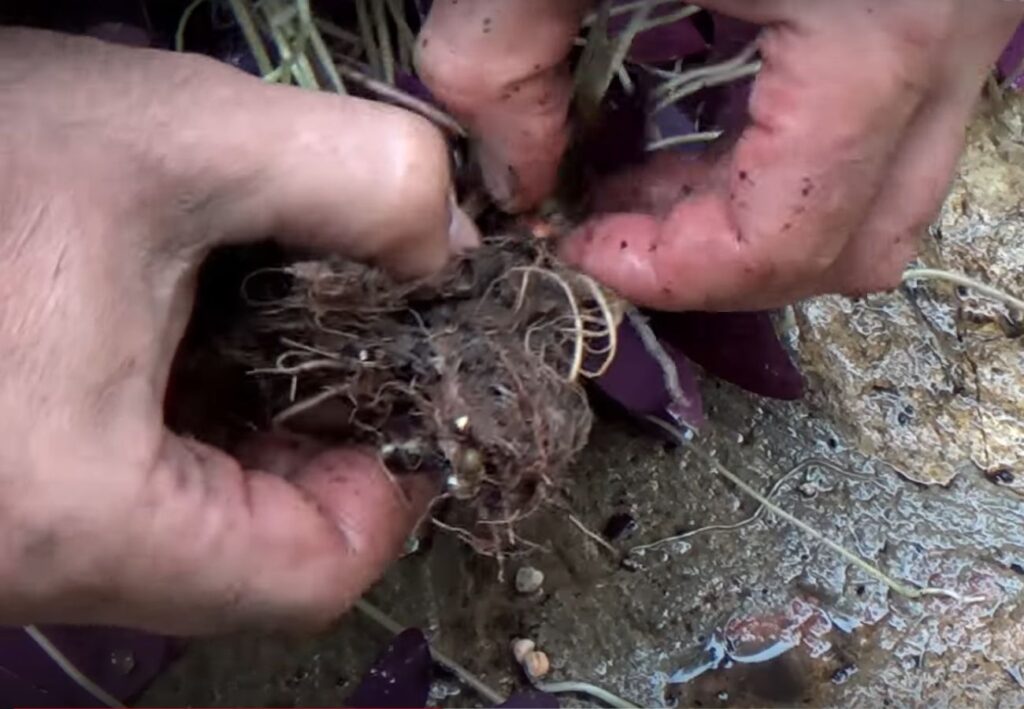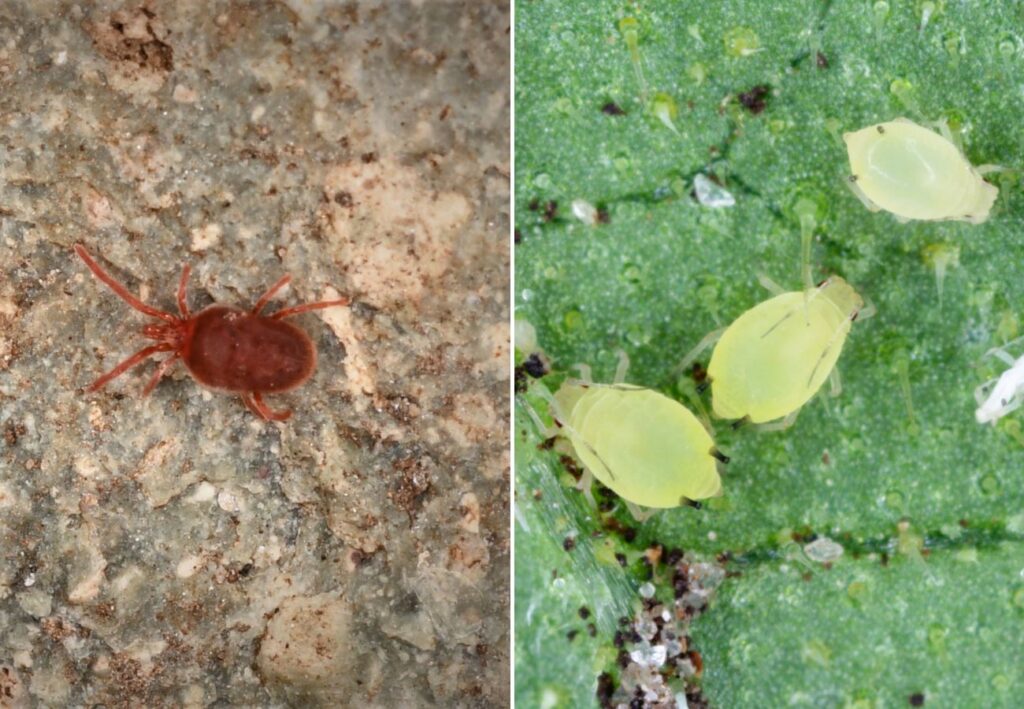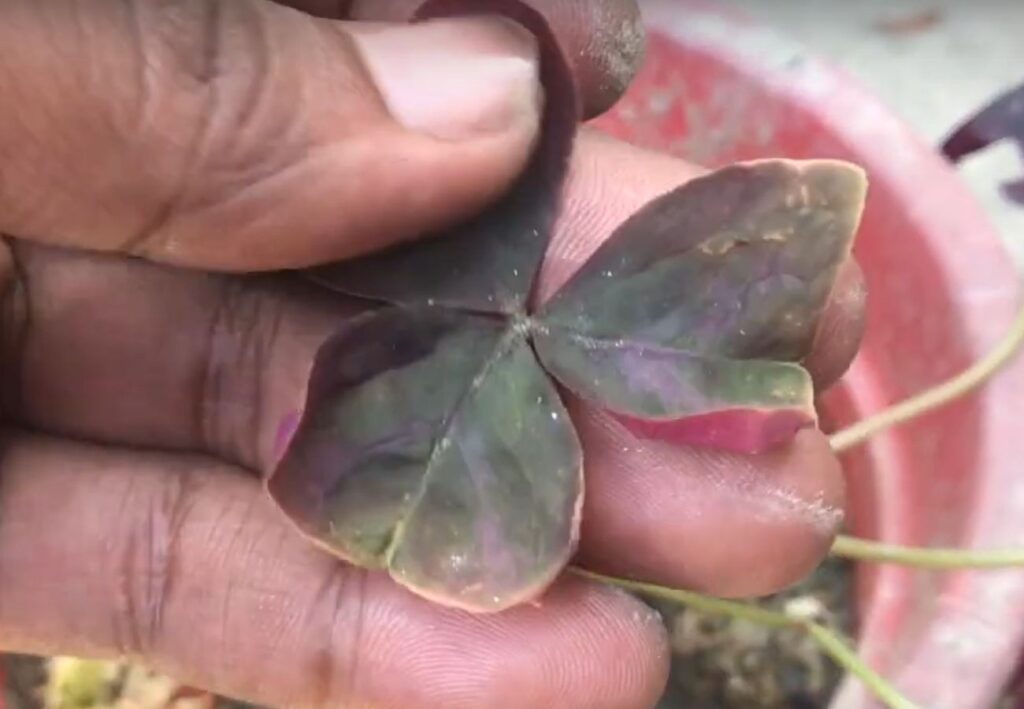Adding a Purple Shamrock plant to your home can instantly brighten up any space. These plants, with their deep purple leaves and delicate white or pink flowers, bring a unique touch of color and elegance.
Purple Shamrock plants are not only visually stunning but also easy to care for, making them perfect for both novice and seasoned plant lovers.
Beyond their beauty, Purple Shamrocks offer several practical benefits. They can improve air quality, helping create a healthier living environment.
Their compact size also makes them ideal for small spaces, such as apartments or offices, where they can thrive with minimal maintenance.
You might be surprised at how these charming plants can transform your home’s ambiance. Their unique appearance can act as a great conversation starter, and the low-maintenance nature means you can enjoy their presence without much fuss.
Ready to learn more about these fascinating plants and how to care for them? You’re in the right place.
What Is a Purple Shamrock Plant?
A Purple Shamrock plant, also known as Oxalis triangularis, is renowned for its deep purple leaves and delicate white or pink flowers. This plant is native to Brazil and makes a striking addition to any home.
Botanical Background
Oxalis triangularis belongs to the Oxalidaceae family. It originates from Brazil, thriving in the country’s humid and subtropical climate. You might also hear it referred to as False Shamrock due to its resemblance to the true Shamrock plant.
It’s a perennial, meaning it can live for more than two years, often going through periods of dormancy.
These plants are small and manageable, making them perfect for indoor environments. You’ll find they are relatively easy to care for, thriving in indirect sunlight and requiring moderate watering.
Physical Characteristics
The Purple Shamrock plant is characterized by its striking, triangular-shaped leaves that close at night and reopen during the day. The leaves are usually a deep purple hue, though they can come in other shades.
This unique feature makes them a fascinating addition to your indoor garden.
Each leaf typically has three leaflets, giving it a clover-like appearance. The plant also produces delicate, five-petaled flowers that are white or pink. The contrast between the dark leaves and light flowers adds visual interest to your home decor.
Top Benefits of Having a Purple Shamrock in Your Home
A Purple Shamrock plant not only enhances your home’s beauty but also offers benefits like air purification and ease of care.
Air-Purifying Qualities
Purple Shamrock helps improve indoor air quality. This plant can absorb various contaminants and release fresh oxygen, making your living space healthier.
Due to its small size, it’s suitable for apartments, bedrooms, and offices, providing cleaner air without taking up much space.
Aesthetic Appeal
Purple Shamrock adds a unique touch to your home decor. Its vibrant purple leaves and delicate white flowers offer a striking contrast to typical green houseplants.
It fits well in modern interiors and blends seamlessly with different styles, making it a versatile decorative element for any room.
Ease of Care
This plant is easy to care for, requiring minimal attention. It thrives in indirect light and only needs watering when the soil is dry. Purple Shamrock is also resilient and can bounce back even if neglected for a short period.
This makes it an excellent choice for beginners or those with busy lifestyles.
Caring for Your Purple Shamrock
To keep your Purple Shamrock healthy and thriving, you will need to provide the right balance of water, light, temperature, soil, and nutrients.
Watering Needs
Water your Purple Shamrock when the top inch of soil feels dry. It’s best to use water that’s at room temperature. Avoid overwatering, as this can lead to root rot.
Instead, wait until the soil is slightly dry before watering again. If you notice the leaves drooping, it’s a sign your plant might need water.
During the growing season in spring and summer, increase the watering frequency. In contrast, reduce watering during the fall and winter months as the plant enters a dormant phase.
Using a pot with drainage holes can help prevent water from accumulating at the bottom.
Light and Temperature Requirements
Place your Purple Shamrock in bright, indirect light for optimal growth. Direct sunlight can scorch its delicate leaves. A spot near an east or north-facing window works well. If you notice the leaves losing color or becoming less vibrant, consider moving it to a spot with more light.
The ideal temperature range for your plant is between 60°F and 75°F. Avoid placing it in drafty areas or near heating and cooling vents. Purple Shamrock is quite sensitive to temperature fluctuations, so a stable environment is key.
Soil and Fertilization Tips
Use a well-draining potting mix to ensure the soil doesn’t retain excess moisture. A combination of standard potting soil with added perlite or sand works great. This will help maintain the right balance of moisture and air around the roots.
Fertilize your Purple Shamrock every 2-3 weeks during the growing season. A balanced, water-soluble fertilizer diluted to half-strength is suitable. In the dormant season, you can skip fertilization. Be cautious not to over-fertilize, as this can damage the plant and cause leaf burn.
By following these straightforward guidelines, you’ll help your Purple Shamrock thrive and add a touch of beauty to your home.
Propagating Your Purple Shamrock
Propagating a Purple Shamrock can be done using the division method or seed cultivation. Both methods have their own steps and requirements for success.
Division Method
Division is one of the easiest ways to propagate a Purple Shamrock. Start by gently removing the plant from its pot. Shake off excess soil to reveal its tuberous roots, resembling small potatoes.
Carefully divide the tubers into smaller sections, ensuring each piece has a growing point or shoot. Plant these sections in fresh, well-draining soil.
Water lightly to help the newly planted sections establish. Place them in a spot with indirect sunlight and maintain moist but not waterlogged soil. New growth should appear within a few weeks.
Seed Cultivation
Seed cultivation is another way to propagate your Purple Shamrock. It’s a slower process but equally rewarding. Begin by collecting seeds from an existing plant.
Sow the seeds in a shallow tray filled with a mix of peat moss and perlite. Lightly cover the seeds with a thin layer of soil, and water gently to keep the medium moist.
Place the tray in a warm location with indirect sunlight. Seeds generally take a few weeks to germinate. Once seedlings have sprouted and grown strong enough to handle, transplant them into individual pots with well-draining soil.
Potential Challenges
Keeping a Purple Shamrock plant vibrant can be tricky due to common pests and diseases. Knowing how to troubleshoot these issues will help you maintain a healthy plant.
Common Pests and Diseases
Purple Shamrock plants can attract pests like spider mites and aphids. Spider mites are tiny and usually found on the undersides of leaves, causing yellowing and webbing.
Aphids are small, green or black insects that suck sap from the plant, leading to stunted growth. Root rot is another issue, often caused by overwatering, which leads to wilting and yellowing leaves.
To manage these pests, consider using insecticidal soap or neem oil. For root rot, ensure the plant is in well-draining soil and avoid excessive watering. Regularly inspect your plant to catch these issues early.
Troubleshooting Tips
When your Purple Shamrock shows signs of distress, it’s essential to act quickly. Drooping leaves might indicate a lack of water, while yellowing leaves can suggest overwatering or too much direct sunlight. If you notice leaf spots, it might be a fungal issue, so consider using a fungicide.
Adjust your watering schedule based on the plant’s needs and environment. Make sure the plant gets indirect light for optimal growth. Use a plant support system if the stems become too long or floppy.
Regularly aerate the soil to improve drainage and root health. These steps will help you keep your Purple Shamrock thriving amidst potential challenges.
Introducing a Purple Shamrock plant into your home not only adds a splash of color but also brings numerous benefits, from improving air quality to offering low-maintenance beauty.
With its unique appearance and simple care requirements, this plant is perfect for any living space, whether you’re a beginner or an experienced plant enthusiast.
By following the care tips and being mindful of potential challenges, you can ensure that your Purple Shamrock remains a vibrant and charming addition to your home for years to come.
